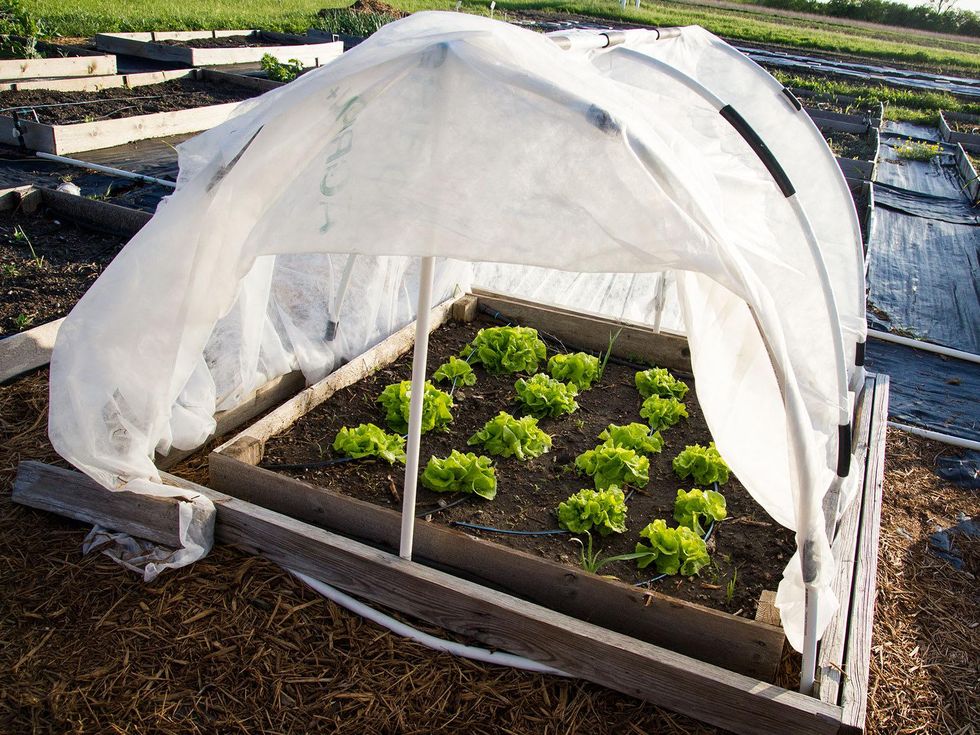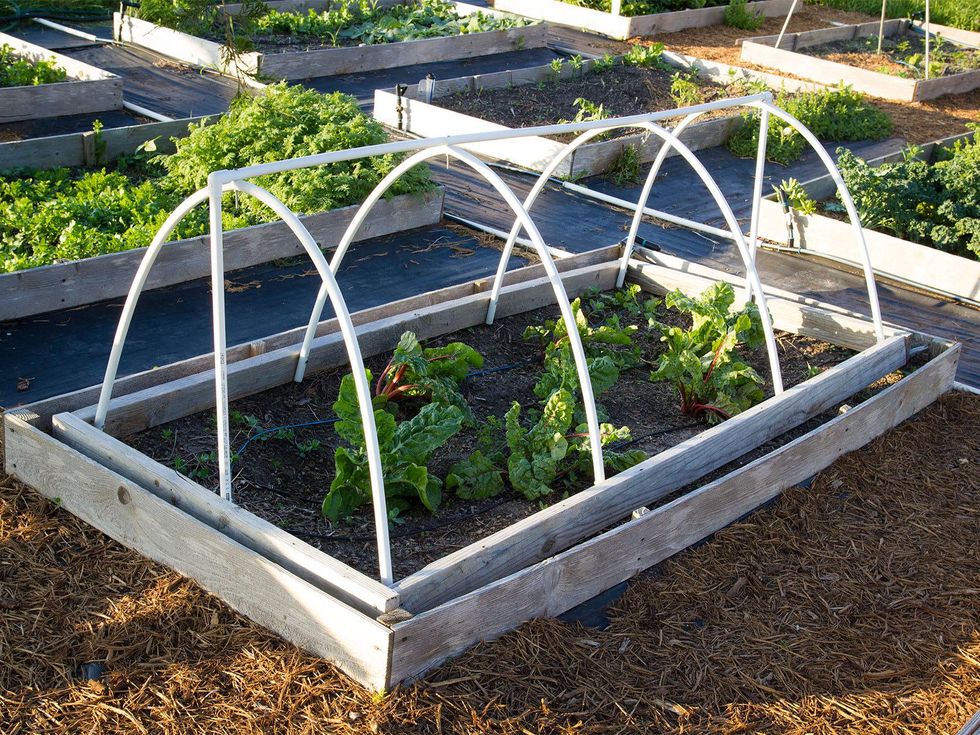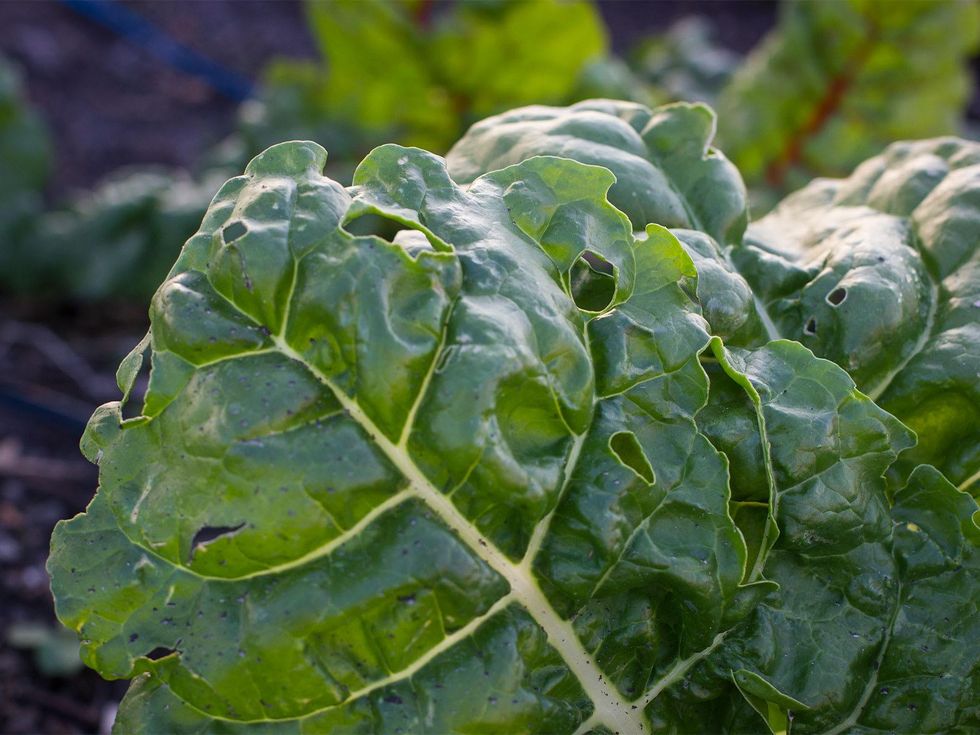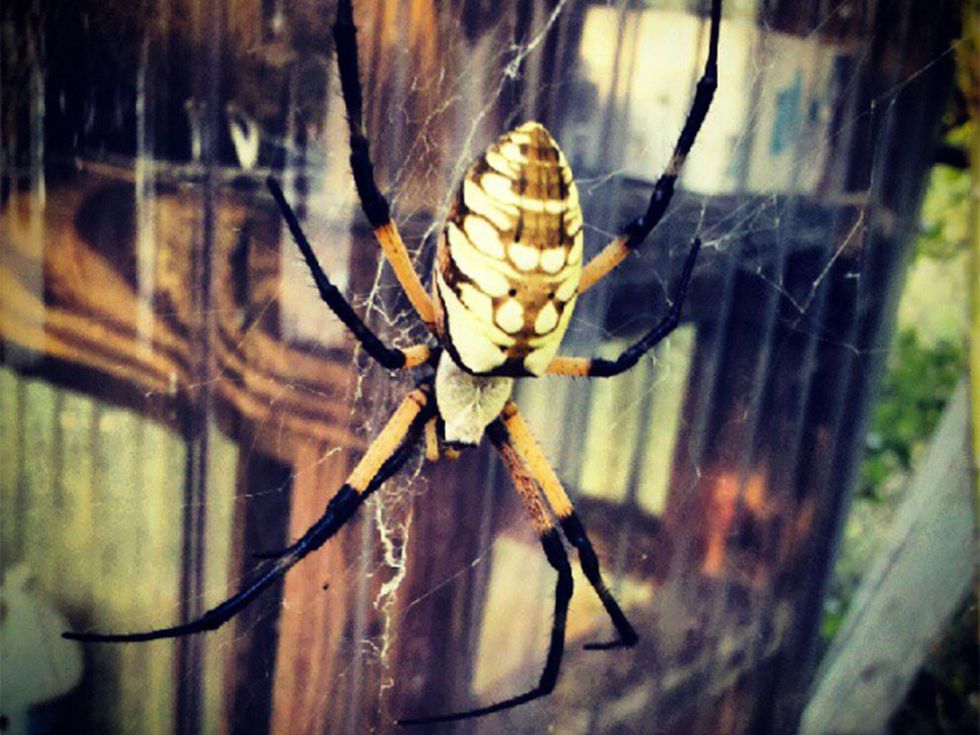The Farmer Diaries
How to outwit pesky grasshoppers on a Texas farm
My attempt to opt out of industrialized agriculture and declare food independence has not been without its challengers. As soon as my garden seeds sprout out of the ground, there are insects waiting to eat them.
Now in late April, grasshopper damage has begun to appear on the tender leaves of young Swiss chard transplants. Not even a day after feeling the satisfaction of seeing cucumber and squash seeds sprout, I am washed over with frustration when I see the inch-high stalks stripped of their leaves.
I can’t ID the grasshoppers as the culprit beyond a shadow of doubt. But I’ve been seeing their young nymphs all around, and I know their rap sheet. So I’m pinning the crime on them. Even if it was caused by a lesser bug, to take measures against grasshoppers is to brace against the worst of the pests and will cover me against anything less damaging.
To take measures against grasshoppers is to brace against the worst of the pests and will cover me against anything less damaging.
I've replanted the affected cucumbers and squash with fresh seed, but they'll suffer the same fate – and so will the rest of the food crops, without preemptive measures. But chemical pesticides consisting of neurotoxins and endocrine disruptors are not an option for me.
Controlling grasshoppers is no small task. My garden plot and the adjacent fields are plagued by hundreds of thousands — if not millions — of them every year.
Their numbers make them a formidable pest. A handful can take a few bites each out of a plant and devour it in just a few hours. In past summers, they have stripped the leaves from my okra, tomatoes, collard greens, kale and Swiss chard; a few times they’ve even devoured the leaves and bark off of my mulberry trees.
I can’t say that my conflict with grasshoppers each year hasn’t made me doubt the merits of organic agriculture. The fact is, these plague proportions of grasshoppers are exacerbated by industrial agriculture.
Planting vast fields of food crops nourishes the grasshoppers; chemical pesticides do little more than make grasshoppers feel dizzy while their predators take the hit. I’m surrounded by monocrops of cattle feed, so crop dusting planes are a frequent sight on the horizon.
The fact that everyone around me uses toxic chemicals is proof that they’re ineffective against pests. The planes and giant tractors spray and spray — and still the grasshoppers survive.
In past years, I’ve tried to wait out the grasshoppers and work with the plants that remained after they got their fill. I wasn’t too lazy to do something about them; I simply tried to grow food on a small scale with methods I could eventually use one day in a larger, commercial operation. So I avoided anything that I thought would be cost-prohibitive for growing acres of produce rather than square feet of it.
Lightweight and cheap, the insect barriers have kept my lettuce as uneaten as it would be if it were growing in a poisonous gas chamber.
But I think I’ve found a solution, in a catalog from a commercial farm supplier. It's called insect barrier, and it appears to be feasible both for my small plot now and for my aspirations of a larger farm with acres of crops.
Unlike frost blankets — which I tried previously as a barrier, with poor results — the insect barrier won’t trap heat or reduce the amount of sunlight that reaches the leaves under it. It's a gauzy blanket that can be laid over garden plants with or without additional support structures, and it works about as simply as a pest control can work: Plants get tucked inside the barrier, and pests get shut out — no toxins, no dead wildlife.
For my small plot, I’m using half-inch PVC pipes about three feet long, bent into semi-circles that I mounted to a frame of boards made of reclaimed wood from a torn-down barn. The barrier comes in affordable rolls, about 10 feet wide by 150 feet long. Draped over the pipes, it looks like covered wagons from the 1800s. Lightweight and cheap, they’ve kept my lettuce as uneaten as it would be if it were growing in a poisonous gas chamber.
I plan to use this method on tomatoes, kale, Swiss chard and collard greens, as well as a few beds of zinnias that will produce cut flowers to be sold at the local farmers market. I’ll let the okra, cantaloupe, squash and hardier plants go up against the pests on their own — though I may sprinkle diatomaceous earth on them later in the season, to give them an edge in the battle. I’ll also keep adjacent land mowed regularly, so that the grasshoppers will have less refuge and food supply.
By summertime, my efforts will be aided by the arrival of black-and-yellow garden spiders that weave massive zigzag webs, three feet in diameter, among the tomatoes. I also anticipate the return of a few roadrunners who spend their days chasing down grasshoppers for dinner. Coyotes also sustain themselves through the summer on a diet of grasshoppers, and there are a few of those around too.
These creatures are the few survivors of the assault waged by industrial agriculture on my land before my time. It’s taken four decades of recovery for them to return, and the sight of them reassures me that sustainable food production is indeed worth the patience, effort and imagination it requires.




